MUSIC HALL USB-1 turntable
+ Easy to set up; fun sound; tracks well with little to no inner groove distortion; beautiful glossy finish; built-in USB and phono stage; standard cartridge mount allows upgrades; low noise floor; affordable.
– Highly microphonic; build quality and material selection could be better; minor speed issues; flat soundstage.
Sound: 7/10
Value: 8/10
A guide to the ratings
IF you’re familiar with turntables, you must have heard of Music Hall at least once in your lifetime. Music Hall was founded in 1985 and is dedicated to manufacturing, importing and distributing well-priced, top quality, high-end audio components.
While the company is known for its high-end turntables, what we will be looking here today is its most budget offering – the USB-1.
The whole unit is quite light, probably too light at only 4.4kg. Compared to the usual decks I’ve picked up over the years, the USB-1 is definitely the lightest. It makes sense as the whole unit is made of plastic, save for the tonearm and platter.

The interface consists of a rotary power switch with the start/stop button beside it, a pitch adjustment slider, and a speed selector so you can play both your 33 ⅓ and 45 RPM records. The power switch also houses a strobe light so you can check the speed.
In the box, you’ll find a 45 RPM record adapter and a dust cover. The tonearm on the unit is a static balanced S-shaped unit with an effective length of 220mm and a detachable headshell on which an Audio-Technica AT3600L moving magnet cartridge is mounted. The cartridge is entry-level with a conical stylus, but of course, since this is a standard mount headshell, you can always upgrade when the itch comes.
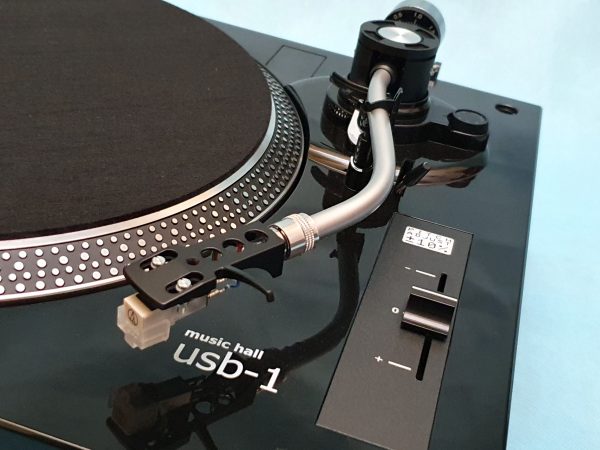
Keeping the budget in mind, the specifications for the turntable are not the most impressive around. Wow and flutter is specified at <0.25% for 33 ⅓ RPM so it’s possible to discern fluctuations in pitch if you have a keen ear. However, this is understandable considering it is servo and not quartz-controlled.
There’s also a 16-bit/48KHz analogue-to-digital converter that allows you to connect the turntable to a computer via USB to digitise your vinyl records. A CD with Audacity software is also supplied to aid recording. For those who don’t have a phono stage, the USB-1 has one built in, which can be bypassed if needed.
SETTING UP
Setting up is easy as the cartridge was already been properly installed and aligned. I set the tracking force at 2.5g using my stylus force gauge as per the recommended manufacturer specification. Upon start-up, I noticed the turntable running faster on both speeds. However, I found two adjustment trimmers at the bottom of the turntable. I tried using my flathead screwdriver but couldn’t turn them.
I’ve broken several of these trimmers in the past so I decided not to mess with them and corrected the speed using the pitch slider. The turntable also has the habit of straying from its speed by gently oscillating up and down. Though imperceptible during my playback, it shows in its strobe.
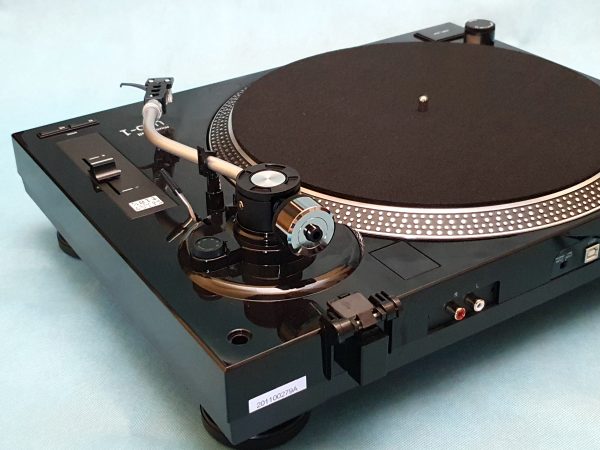
Because the turntable is very microphonic, I can hear the feedback loud and clear from my speakers whenever I tapped the plinth or closed the dust cover. I wouldn’t recommend placing the USB-1 on the same table as your speakers as the vibrations will be picked up by the stylus and cause nasty interference.
LISTENING
Given the microphonic plinth, run-of-the-mill tonearm, and entry-level cartridge, I braced myself to cringe at the eventual sound. But once the needle dropped, I was greeted with a fun and competent tune. Silly me for making assumptions too soon.
Alan Parsons Project’s Eye In The Sky (1982, Arista AL-9599) record sounded more bassy than I am used to. There’s some extra flabbiness in the bottom end while the presentation as a whole remained enjoyable. I avoided listening to it too analytically because whenever I did, I would start to notice how the imaging was less than stellar.
The USB-1 presents music to you with a wall of sound, so the soundstage is flat with no real depth. Pink Floyd’s Wish You Were Here (reissue, Harvest – SHVL 814) does sound good, and while I could hear the nuances between the synth and guitar, I couldn’t get the full experience of having them perform in my living room. The ability to resolve complex instruments is still commendable so I can see this unit sounding better with a better cartridge.
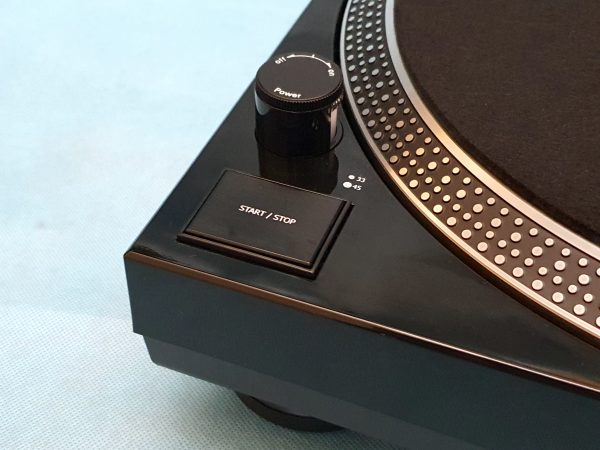
Having recently broken my glass-top turntable rack, I opted to place the USB-1 on the floor of my apartment – this could perhaps be the biggest contribution to the sound quality to me. I figured coupling it directly to the floor instead of a rack – where resonances from the speakers could interact with the turntable – would help with the sound as the turntable itself is all plastic and hollow. For those without proper hi-fi racks, fret not as the rubber feet feels high quality and should do a good job dissipating vibrations when placed on light duty tables or racks.
Upon playing record after record, I gradually noticed how quiet the table was. With my ear placed directly on the dust cover, I could only hear the motor whirring faintly. There’s no nasty cogging or buzzing that could be heard or felt coming from the motor. There’s also no discernible noise between passages through my speakers, save for some ticks coming from the record itself.
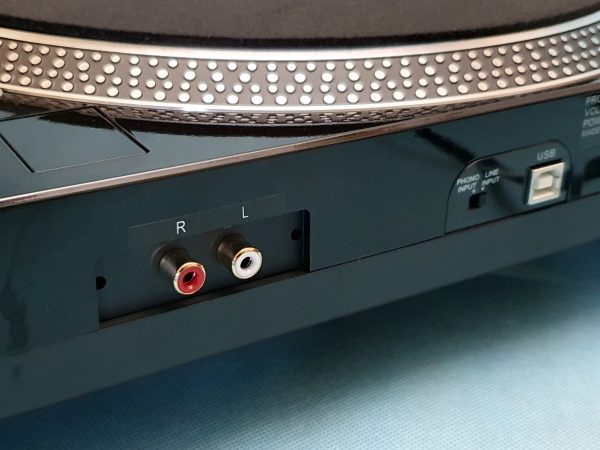
The supplied tonearm is a competent one and tracks passages well. There are no obvious mistrackings to detract you from the music and it plays well all the way into the inner grooves. At the risk of being pedantic, I ran it through the cartridge/arm resonance test sweep (band B2 and B3) from the Hi-Fi News – Analogue Test LP (HFN 002).
The arm started to show signs of lateral resonance at 21Hz and peaked between 13Hz-9Hz. There’s a small but sustained horizontal resonance between 14Hz-6Hz. The unit tracked all the usual tracking bands reasonably well, too.
THE LAST WORD
The Music Hall USB-1 is definitely not the only budget turntable on the market for budding vinylphiles but it is a welcomed contender. The built-in phono stage resolves the need to invest in a separate one, if you’re unsure whether or not to go down the analogue path. As anyone with a turntable set-up will tell you, the rabbit hole runs deep.
This turntable is easy to set up and fun sounding with some imaging caveats but for casual listeners who want to add a conversational piece in their home set-up, the Music Hall USB-1 will definitely sit pretty while providing hours of ambient music. Just remember to check the speed is true before you bring one home so you won’t have to fiddle with the pitch slider.
Gear
Sources: Pro-Ject Audio RP6.1-Audio Technica AT51, Telefunken S-500-Syrinx PU-2 tonearm-Audio Technica AT95e / Phono: TCC TC-750 / Preamp: PASSDiy Whammy / Amplifier: DIY 75W class AB power amp / Speakers: Elac B6.2, Jamo Cornet 90 IV
Price: US$249
Malaysian price: RM1,190
Malaysian distributor: A&L AUDIO (+603 79582884) / Find your distributor.
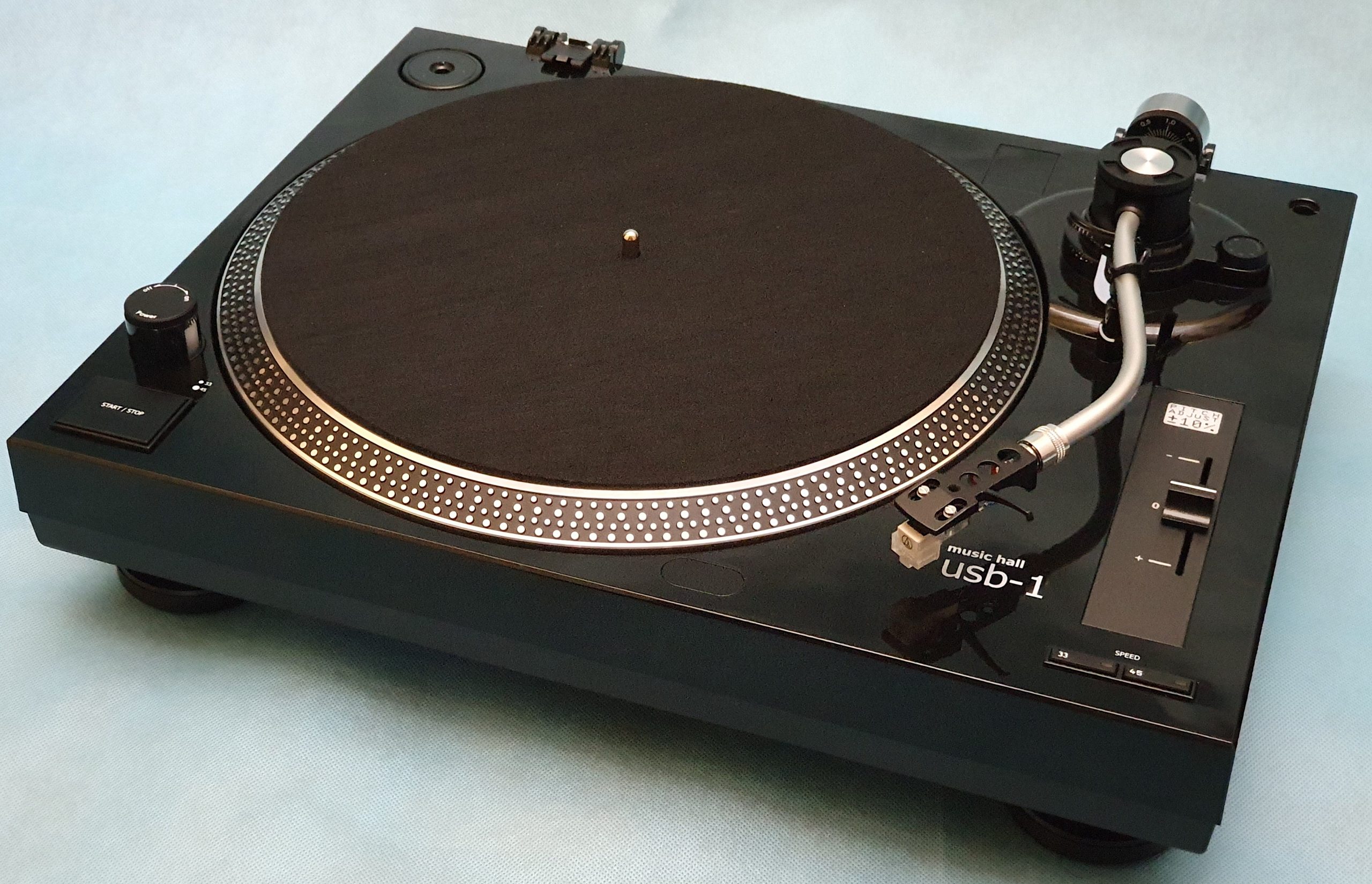





I have a MUSIC HALL USB-1 turntable. Virtually all the issues you mentioned are same with mine. That said, it still sounds good and I like that it “imitates” a dj turntable function wise.
I just retired my Music Hall USB-1 after a decade of use.
I agree with this review, it is spot on.
I upgraded the cart to an Ortofon OM5E and that did improve the sound. (The Ortofon 2M Red was not a good match though).
Although I was happy with the table, and it served me well over the past 10 years with no issues, I wouldn’t recommend buying one of these today. At the price these (And the replacement US-1) sell for, you can get a better table. For example, you can get a Pro-Ject Debut III for the same price. It is a higher quality and better sounding unit.